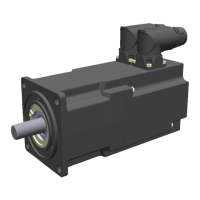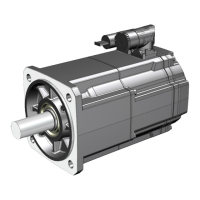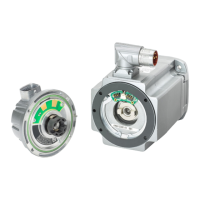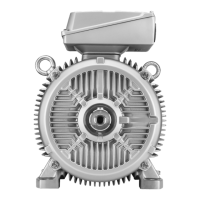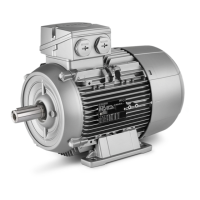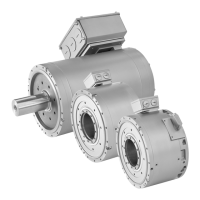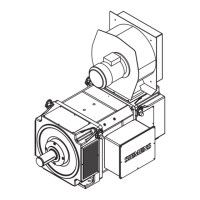Motor components and options
4.2 Options
S-1FT7 synchronous motors
74 Configuration Manual, 09/2018, A5E45099423B AA
Type of the holding brake
The holding brake is implemented as a permanent-magnet brake.
The magnetic field of the permanent magnets exerts a pulling force on the brake armature
disk. This means that in the no-current condition, the brake is closed and the motor shaft is
held.
When a 24 V DC rated voltage is applied to the brake, the current-carrying coil produces an
opposing field. This neutralizes the force of the permanent magnets and the brake opens
without any residual torque.
The permanent magnet brake has zero backlash.
Damage to the motor due to axial forces on the shaft extension
Axial forces on the shaft extension can damage motors with an integrated permanent-
magnet holding brake.
• Avoid axial forces on the shaft extension.
The holding brake is used to lock the motor shaft when the motor is at a standstill. The
holding brake is not a working brake to brake a spinning motor.
The holding brake is designed for 5 million switching cycles when the motor is at a standstill.
A limited number of EMERGENCY STOP operations is permissible. The holding brake can
perform up to 2000 EMERGENCY STOP braking operations with the specified highest
braking energy. In so doing, the holding brake is subject to permissible wear.
● Comply with the specified highest braking energy for each emergency braking operation.
Formula to calculate the braking energy for each braking operation
W
BR
= (
J
Mot Br
+
J
Last
) •
n
Mot
² / 182.4
Braking energy for each braking operation
Mot
Speed at which the brake is closed
Mot Br
/ kgm
2
Motor rotor moment of inertia with brake
→ see Chapter "Data sheets and
characteristics (Page 150)"
